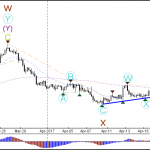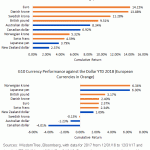by Philip Pilkington
In order to give an adequate definition of what has been called Keynesian kaleido-statics it is first relevant to define it against that out of which it grew. Keynes’ work, as has been noted many times, grew out of the work of Alfred Marshall. Keynes, in a very real sense, should be seen as an economist working in the Marshallian tradition.

What then defined the Marshallian tradition? Basically, Marshall’s work was based on a partial equilibrium approach. The idea was to define an equilibrium position — that is, a position in which all activity had stabilized and come to a point of rest — and then change one variable while leaving everything else constant to see what effect this change had.
This was in contrast to the general equilibrium approach developed by Leon Walras. In the Walrasian approach, systems were only really looked at from the point-of-view of full equilibrium. Walras and his followers were less interested in what changes might occur should one variable be altered and more interested in finding complete and total ‘solutions’.
In light of mainstream economics, we might say that contemporary DSGE models, apart from being called ‘general equilibrium’ models are actually somewhere in between general and partial equilibrium models. When economists subject such models to random stochastic ‘shocks’ they are, in a sense, doing something similar to Marshall. But they are different from Marshall in that they always seek some sort of teleological ‘end point’ of general equilibrium. We might say that the difference is that while Marshall tried to deal with the movement of historical time — that is, time as it is experienced in the real world — DSGE modellers still do not aspire to do this and remain dealing with purified logical time.
Keynes took leave from Marshall on one very important point: he introduced expectations as not only an active element but the primary driving force behind economic activity. He utilized Marshall’s partial equilibrium method in the General Theory but he introduced changes in expectations that generated almost arbitrary points of partial equilibrium. This is why Shackle likened Keynes’ methodology to a kaleidoscope. In his book A Scheme of Economic Theory he writes,
There is a toy called a kaleidoscope, in which three mirrors face inwards in a tall pyramid and repeat in symmetrical reflections the random mosaic of colour formed by loose pieces of stained glass on the floor of the instrument. This toy seems strangely apt as an analogue of Keynes’s method. Even the randomness of the disposition of the coloured pieces at any moment of repose suggests the conventional character of the economy ‘at rest’. The economy is in the particular posture which prevails, because particular expectations, or rather, particular agreed formulas about the future, are for the moment widely accepted. These can change swiftly, as completely and on as slight a provocation as the loose, ephemeral mosaic of the kaleidoscope. A twist of the hand, a piece of ‘news’, can shatter one picture and replace it with different ones. (p48)














Leave A Comment